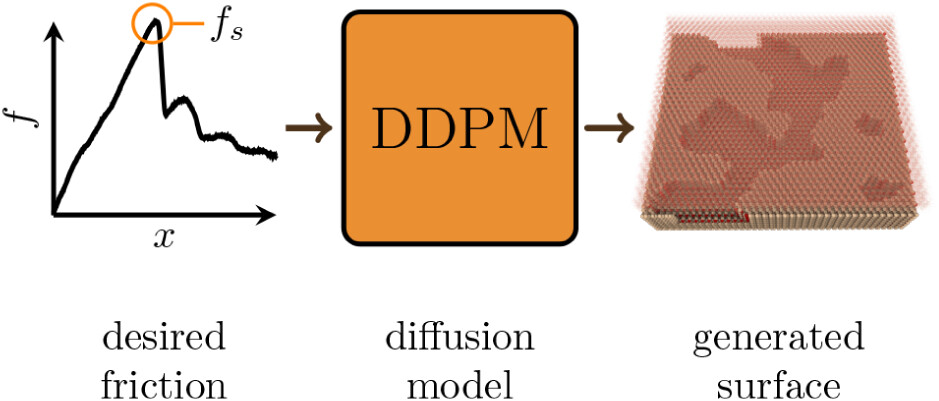I’m excited to share that two of my research papers on friction have been published this past week. Both works are tied to my PhD thesis, and I’m very pleased with how they turned out.

Sliding friction of a single contact. The inset shows a typical stick–slip friction curve.
1. Velocity-Dependent Friction and Wear
The first article, “Velocity-Dependent Dynamics of Friction and Wear,” explores how sliding velocity influences friction and wear using molecular dynamics simulations.
We identified three distinct velocity regimes, with a surprising local minimum in both friction and wear.
One key implication: adjusting velocity could reduce both friction and wear — an insight with potential relevance for everything from nanoscale devices to industrial machinery.
📄 Read the full paper in Tribology Letters:
EM Nordhagen, HA Sveinsson, A Malthe-Sørenssen.
Velocity-Dependent Dynamics of Friction and Wear.
Tribology Letters 73, 115 (2025).

Inverse frictional design.
2. AI-Driven Surface Design for Friction Control
The second paper is more of a proof-of-concept. Here, we demonstrate how surfaces can be designed to achieve target friction properties using an automated, iteration-free method.
Inspired by generative AI and image synthesis, we trained a conditional diffusion model that maps static friction coefficients to corresponding surface structures.
This opens a door to inverse design in tribology, where we specify the desired outcome and let the model generate the right solution.
📄 Read the full paper in The Journal of Physical Chemistry C:
EM Nordhagen, HA Sveinsson, A Malthe-Sørenssen.
Tailoring Frictional Properties of Surfaces Using Diffusion Models.
The Journal of Physical Chemistry C (2025).
For a more popular-science introduction, check out the dedicated project pages:
I’d love to hear your thoughts or experiences — feel free to leave a comment below!
